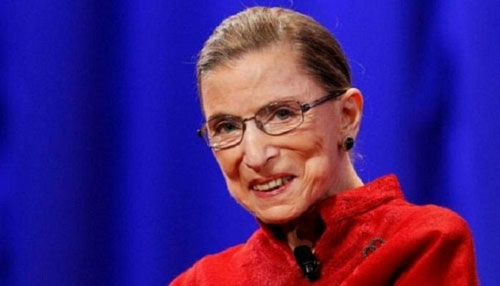Washington
A monumental battle in Congress was initiated after US Supreme Court Justice Ruth Bader Ginsburg’s death as Senate Majority Leader Mitch McConnell invited President Donald Trump to immediately nominate a replacement — setting aside the pleas by Democrats to await the results of the November 3 presidential election.
“President Trump’s nominee will receive a vote on the floor of the United States Senate,” McConnell proclaimed on Friday night, without providing a time frame for action by the Senate.
That confirmed McConnell’s prior insistence that he would do so in an election year, despite stonewalling President Barack Obama’s efforts to nominate a successor to Justice Antonin Scalia in February 2016, 10 months before that year’s presidential election.
Senate Democratic Leader Chuck Schumer urged McConnell to await the results of the elections that are less than two months from now. He quoted McConnell’s 2016 words on Twitter, saying “The American people should have a voice in the selection of their next Supreme Court Justice. Therefore, this vacancy should not be filled until we have a new president.”
Trump is seeking a second four-year term and has been trailing Democratic presidential nominee Joe Biden in public opinion polls.
The long-term direction of the nation’s highest court is at stake. The closely divided court currently had five justices with conservative bents and four liberals.
If Trump were to choose a conservative judge to replace the liberal Ginsburg, as expected, the court’s conservatives would have more heft with a 6-3 majority.
Democrats are trying to gain control of the White House and the Senate, which has the power to confirm the president’s nominees for the Supreme Court.
Since becoming Senate majority leader in 2015 McConnell has focused most of his attention and wielded his power to fill the federal courts with conservative judges nominated by Trump.
One senior Senate Republican aide said of McConnell, “No way he lets a (Supreme Court) seat slip away.” The aide added that a major question will be whether McConnell, in tandem with Trump, attempts to fill the vacancy before the Nov. 3 election or sometime before Jan. 20, when the next president will be sworn-in.
It can take several weeks to months between the president’s nomination of a Supreme Court justice and a Senate confirmation vote as the nominee must go through a thorough vetting process by the Senate and often makes visits with individual senators to build support for the nomination.
Then, lengthy confirmation hearings in the Senate Judiciary Committee normally follow culminating with a recommendation on whether the nominee should be confirmed and placed onto the court.
The last Supreme Court opening was filled in October 2018 by Justice Brett Kavanaugh. His confirmation faced strong opposition from Senate Democrats and included bitter hearings amid allegations, which he denied, of sexual misconduct decades earlier.
The Senate is currently controlled by 53 Republicans, while Democrats hold 45 seats. Two independents align with Democrats on most votes.
Among the 53 Republicans are some moderates, including Senators Susan Collins and Lisa Murkowski. Collins is in a tough race for re-election this year in her home state of Maine, which has been trending Democratic.
Ginsburg’s death could have an impact on Collins’ re-election effort and her posture on whether filling the high-court seat should await the outcome of the 2020 presidential race.—Reuters










